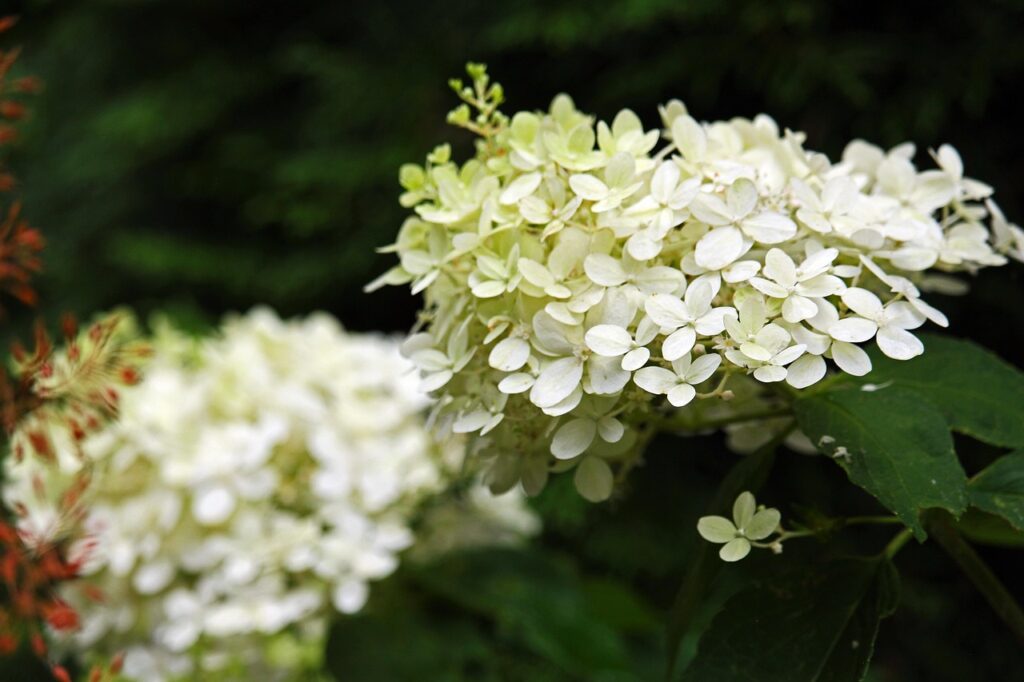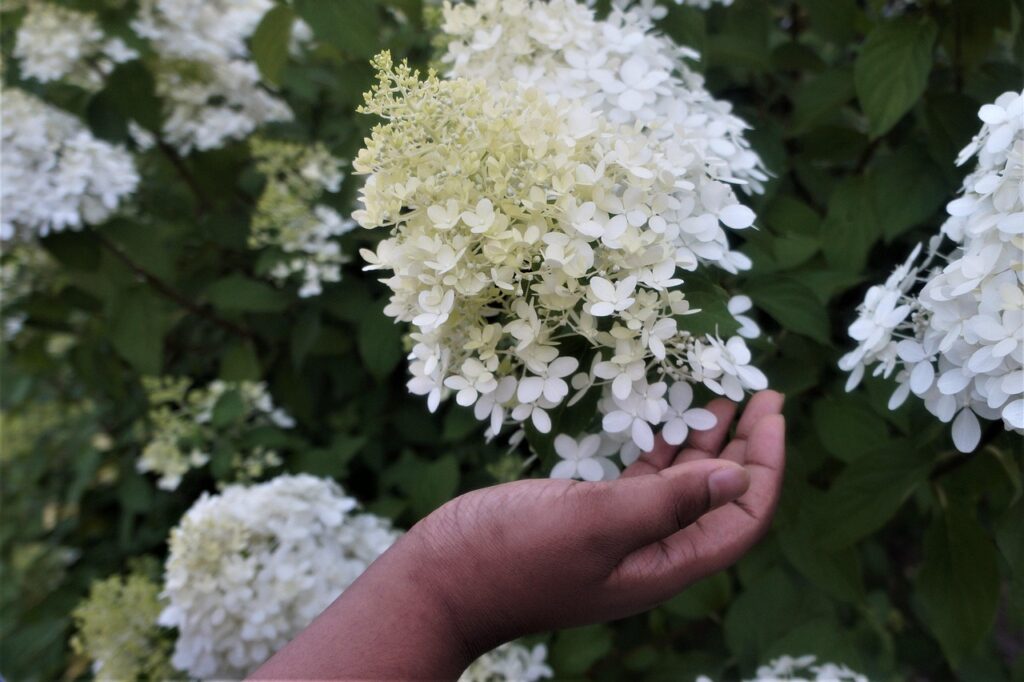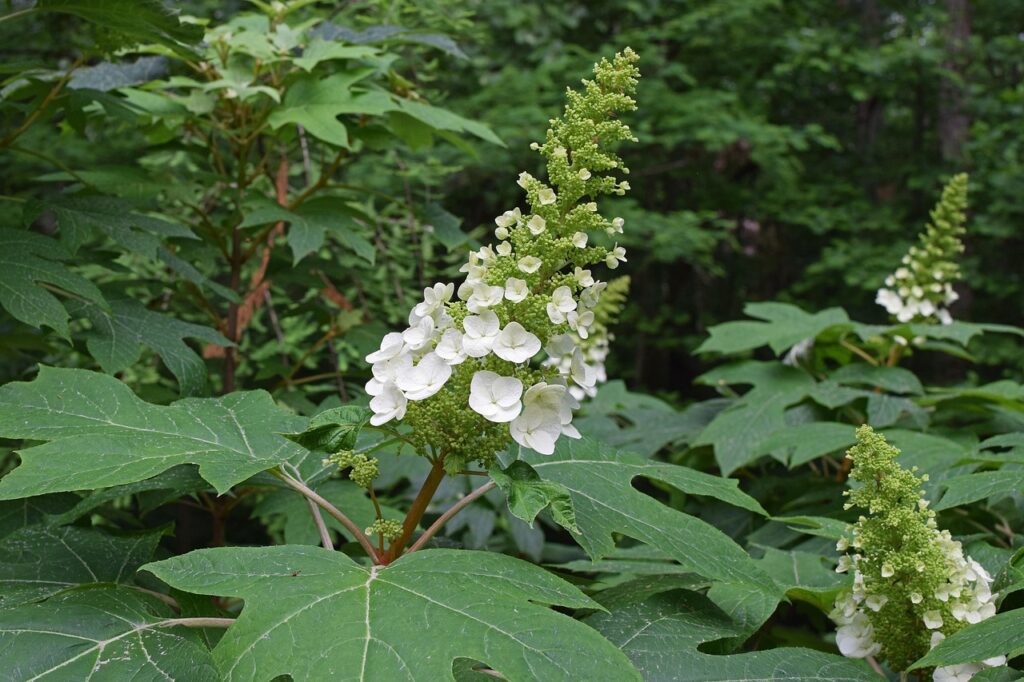by John Fox, Fulton County Master Gardener Extension Volunteer
This article is part of Garden Buzz, a series from Appen Media and the North Fulton Master Gardeners, where rotating columnists explore horticulture topics like herbs, insects, and wildlife conservation. Find all Garden Buzz articles here.
Hydrangeas are getting a head start with the mild spring, with blossoms forming early this year. So, let’s explore some pruning techniques that will help you enjoy these beauties now and in the future.
Hydrangeas are popular ornamental plants known for their large, showy blooms and lush foliage. Proper pruning is essential for maintaining the health, shape and blooming potential of hydrangeas. In this guide, we’ll explore what you need to know about when and how to prune hydrangea plants for optimal growth and beauty.
Types of Hydrangeas
Before diving into pruning techniques, it’s crucial to understand the different types of hydrangeas and their specific pruning requirements.
Bigleaf hydrangea (Hydrangea macrophylla)
Known for their large, round flower clusters, bigleaf hydrangeas bloom on old wood. This means they set their flower buds in late summer or early fall for the following year’s blooms. Pruning at the wrong time can remove these buds, resulting in reduced flowering.
Panicle hydrangea (Hydrangea paniculata)
Panicle hydrangeas produce cone-shaped flower clusters and bloom on new wood. They are more forgiving when it comes to pruning timing and can be pruned in late winter or early spring before new growth emerges.
Smooth hydrangea (Hydrangea arborescens)
Smooth hydrangeas produce large, white flower heads and bloom on new wood. Like panicle hydrangeas, they can be pruned in late winter or early spring.
Oakleaf hydrangea (Hydrangea quercifolia)
Oakleaf hydrangeas feature distinctive oak-shaped leaves and produce cone-shaped flower clusters. They bloom on old wood, so pruning should be done immediately after flowering to avoid removing next year’s buds.




Timing your Pruning
The timing of hydrangea pruning depends on the specific type of hydrangea you have. For bigleaf and oakleaf hydrangeas, prune immediately after flowering, typically in late spring or early summer. This allows the plant to develop new growth and set flower buds for the following year. For panicle and smooth hydrangeas, these varieties can be pruned in late winter or early spring before new growth begins. Since they bloom on new wood, pruning encourages vigorous growth and abundant flowering during the upcoming season.
Follow these general pruning guidelines for healthy, attractive hydrangea plants:
- Remove dead or damaged wood: Begin by cutting out any dead, diseased or damaged branches. Make clean cuts just above a healthy bud or lateral branch.
- Shape the plant: Trim back any overly long or straggly branches to maintain a neat and compact shape. Aim to create a balanced silhouette while preserving the plant’s natural form.
- Thinning out: To improve air circulation and reduce overcrowding, selectively thin out interior branches. This helps prevent disease and promotes better light penetration, leading to healthier growth and more abundant blooms.
- Deadheading: After flowering, deadhead spent blooms by cutting the flower stalks back to a pair of healthy buds or lateral branches. This encourages the development of new growth and may result in additional blooms later in the season.
Tips for Successful Pruning
- Use sharp tools: Use sharp, clean pruning shears to make precise cuts and minimize damage to the plant.
- Sanitize tools: Before pruning, sterilize your pruning tools with rubbing alcohol or a bleach solution to prevent the spread of disease.
- Avoid over-pruning: While it’s essential to remove dead or unwanted growth, avoid excessive pruning, especially on bigleaf and oakleaf hydrangeas, as this can diminish next year’s flowering.
- Monitor soil moisture: Hydrangeas prefer consistently moist, well-drained soil. Water deeply during dry periods to keep the root zone evenly moist but avoid waterlogged conditions.
- Apply mulch: Mulching around the base of the plant helps retain soil moisture, suppress weeds, and regulate soil temperature. Apply a layer of organic mulch, such as shredded bark or compost, in spring to a depth of 2-4 inches.
- Fertilize sparingly: Hydrangeas generally do not require heavy fertilization. Apply a balanced, slow-release fertilizer in spring, following the manufacturer’s instructions. Avoid high-nitrogen fertilizers, as these can encourage excessive foliage growth at the expense of flowers.
Proper trimming is essential for maintaining the health, appearance, and blooming performance of hydrangea plants. By understanding the specific pruning requirements of different hydrangea varieties and following best practices for timing and technique, you can ensure that your hydrangeas thrive with beautiful blooms year after year.
Happy gardening!
Learn More
- Hydrangeas for American Gardens, Michael A. Dirr, 2004, Timber Press, Portland.
- Pruning Hydrangeas – It Depends!
- Hydrangea Q&A, Pat Curran, Horticulture Educator, Cornell Cooperative Extension
- Hydrangeas – How to Plant, Grow and Prune, presented by Linda Cline, North Fulton Master Gardener
About the Author

This week’s “Garden Buzz” guest columnist is John Fox, a 2024 Fulton County Extension Master Gardener. John was the CEO of Emory Healthcare for 16 years and has an interest in landscapes and plant biology.